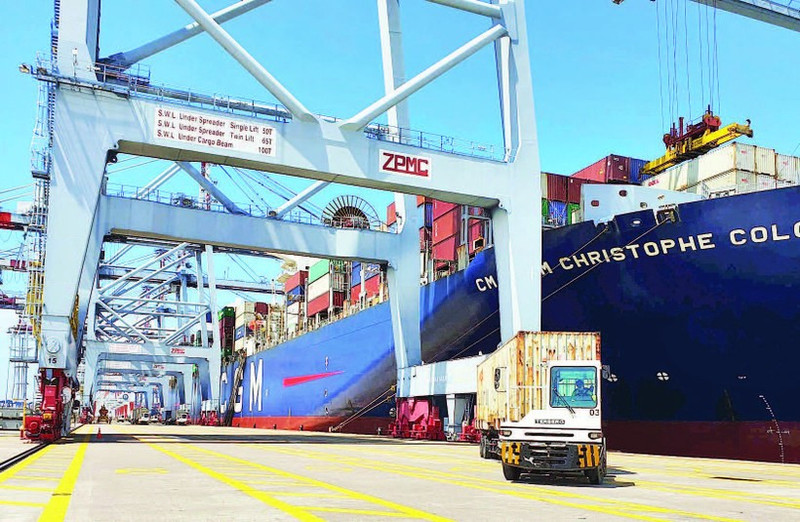Developing logistics of regional and international stature
Following the merger, Ho Chi Minh City has the conditions to open vast opportunities for logistics services, enabling more strategic and integrated planning and allowing it to better connect seaports, airports, and industrial zones, creating favourable conditions for socio-economic development.

In the context of global economic integration, logistics is the "lifeline" and "backbone"—a key factor determining the competitiveness of Ho Chi Minh City’s goods and services.
Creating a seamless logistics network
With its strategic location and modern seaports and warehouses, the city has asserted itself not only as a major domestic logistics hub but also as a critical link in regional and global supply chains. Experts believe that the development of the logistics ecosystem is not only an important pillar in the city's economic development strategy but also a key factor in expanding the growth space of the urban area and the overall economy. In the context of deepening international integration and a strong digital transformation, a modern and efficient logistics system will enable Ho Chi Minh City to connect with the global supply chain.
However, according to Nguyen Thang Loi, Deputy Director of the Viet Nam Institute of Logistics Research and Development, the logistics sector in Viet Nam, including Ho Chi Minh City, is facing many challenges such as high costs, limited infrastructure, complex supply chain management, ineffective use of technology, a shortage of high-quality human resources, and inconsistent service quality. In addition, the logistics system is also under competitive pressure from foreign corporations, lacks coordination among regulatory agencies, and sustainable development has not yet been prioritised.
According to Le Van Danh, Deputy Director of the Ho Chi Minh City Department of Industry and Trade, merging the former Binh Duong and Ba Ria-Vung Tau provinces into the city opens up immense opportunities for logistics development. This "mega city" can optimise its infrastructure. linking major ports in Ba Ria-Vung Tau (Cai Mep-Thi Vai port), vibrant industrial zones in Binh Duong, and the city’s transport network more effectively. Instead of each locality developing independently, integrated transport infrastructure projects will be prioritised, creating a seamless logistics network that reduces transportation costs and time, and optimises business operations. The expanded city will have the capacity to become an international logistics hub, competing directly with others in the region.
A key pillar for economic growth
To build Ho Chi Minh City into a logistics hub of regional significance, experts recommend a long-term vision, policy synchronisation, high-quality human resources development, and the completion of multimodal logistics infrastructure. Special mechanisms should strengthen connections with neighbouring provinces, strengthen adaptability for digital transformation and climate change, and promote the "Ho Chi Minh City Logistics" brand through service quality, port capacity, digitalisation, and smart management. Priority should also be given to green urban logistics, reducing CO2 emissions in transport and warehousing.
Investment in logistics is a core strategy for the city to become a regional and international logistics hub, aiming to become Southeast Asia’s "integrated smart logistics megacity" in the near future.
Nguyen Duy Minh, Vice Chairman of the Viet Nam Logistics Business Association, emphasised that building a smart and green logistics system is now essential, with technology helping optimise resource use. Moreover, the city’s river and seaport system must be fully utilised for cargo transhipment, while inland waterway transport should be promoted as a cost-effective and eco-friendly logistics solution, contributing to the trend of green transition and sustainable development.
To create new growth momentum, building a sustainable logistics sector plays a crucial role. According to the development plan orientation to 2030, the city aims to become an international logistics hub. The city identifies logistics as a key service sector, vital in promoting the socio-economic development of both the city and the southern region. The main objectives are to increase revenue contributing to the city’s Gross Regional Domestic Product (GRDP), reduce costs, and enhance logistics competitiveness. Key tasks to be implemented in the near future include developing logistics service infrastructure through establishing a network of logistics centres across the city and improving connected transport infrastructure to facilitate and reduce logistics service costs. At the same time, the city will promote digital transformation and the application of information technology, support human resource development, foster logistics service provision, and enhance regional cooperation and linkages.








